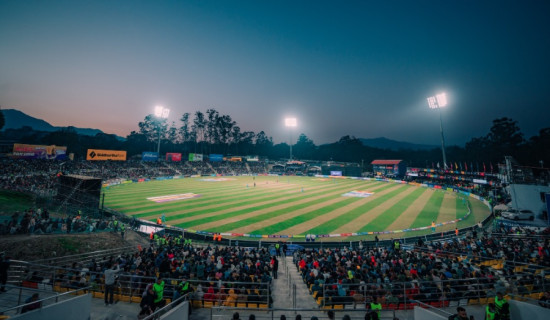- Monday, 15 December 2025
Hurdles To Hospitals
Good health is the first requisite of happiness and success in the life of people. People with sound physical and mental health have better productivity. Nepal’s constitution has recognised right to health as the fundamental right of the citizens. It stipulates that the people have rights to free basic health services, emergency health services and access to information about health. The government has also provided health facilities to the poor, senior citizens and those suffering from diseases like kidney failure, dysfunction of spinal cord and cancer. Despite the lack of adequate resources, Nepal has demonstrated its commitment to the health of people in the spirit of the welfare state. This is indeed state’s positive attribute necessary for building a prosperous, civilised and decent society.
Still, many Nepalis have no access to affordable and basic health facilities because state-run health centres lack sufficient infrastructure and human resources. This is a reason why the private hospitals operating in many parts of country cater to around 80 per cent health services, with the government hospitals providing only 20 per cent. This is really a matter of serious concern. The situation in the far-flung areas is far worse. Doctors often hesitate to work in the remote areas owing to low pay and geographical difficulties. The doctor-patient ratio in Nepal is 1:850 in the Kathmandu Valley and 1:150,000 in the rural areas. The World Health Organisation recommends a doctor-patient ratio of 1:1,000. There are 32,218 registered doctors and 72,550 registered nurses in the country. Of them, only around 15,000 have been working in government health facilities.
Although public health service is state responsibility, its privatisation has increased its cost beyond the capacity of majority of Nepalis. They have to spend a huge amount of their savings on the medical treatment and purchase of expensive medicines. The added financial burden is painful for the poor. In order to ensure people’s access to basic health facilities, the government has decided to build and upgrade the standards of hundreds of health care centres as hospitals across the country. In 2020, the government initiated the construction of 396 local level hospitals. As per the policy and programmes of the fiscal year 2020/21, it will build 5-bed to 15-bed basic hospitals at all local levels. The five-bed hospital will have 12 health workers, including one medical officer. The 10-bed and 15-bed hospitals will respectively recruit 17 health workers with two medical officers, and 27 health workers with three medical officers. The basic hospitals are expected to provide services, including basic treatment, gynecology, pediatrics and general surgery services, among others.
Of 396 hospitals planned to be built in the first phase, 329 have prepared DPR, 327 have issued tender notices, and 307 made agreement with the contractors and received the budget from the Ministry of Health and Population. Although the government has released the budget, their construction failed to gather momentum owing to several factors. The authorities concerned have mentioned the lack of suitable land plots, conflicting views of locals on the construction sites, negligence of contractors and delays in preparation of DPR behind the sluggish work progress. Only a few hospitals have completed their construction work but they face tall challenges of building proper infrastructure and required manpower to provide services to the people smoothly. Now the three-tier governments should work in tandem to overcome those obstacles that have delayed the construction of basic hospitals.

















